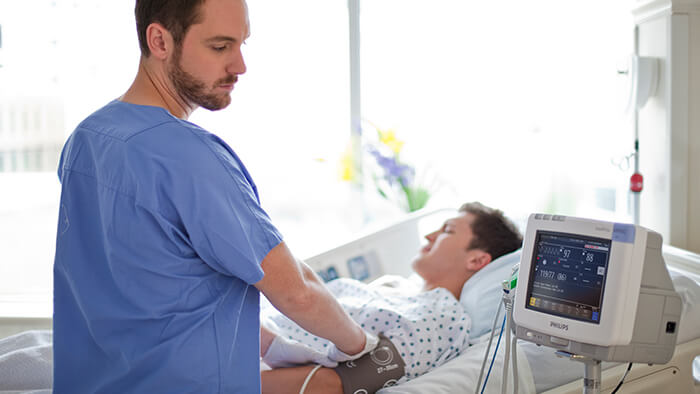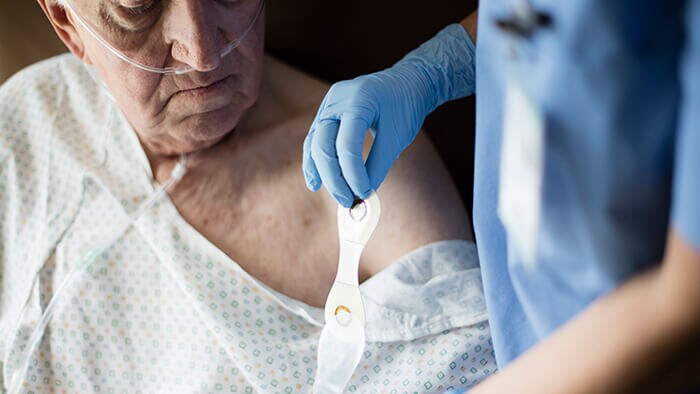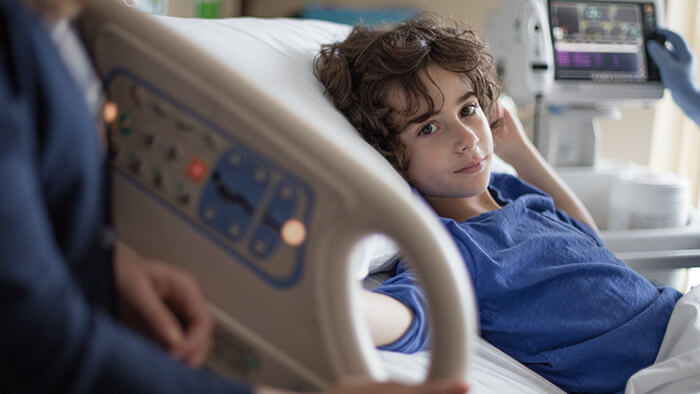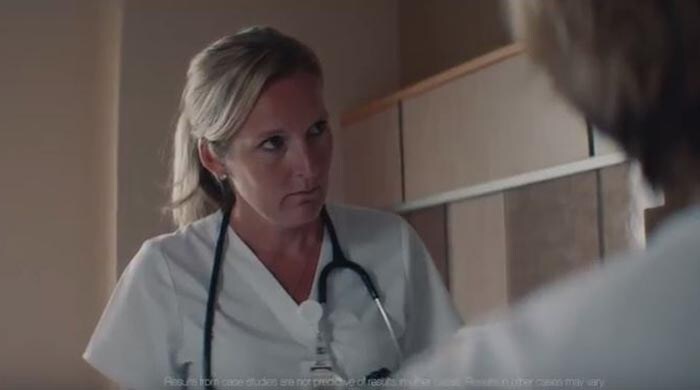Smart patient care and clinical intelligence where and when you need it
The general care floor encompasses a wide range of patients with varying conditions and needs. Sicker patients, unexpected clinical deterioration and lower nurse-to-patient ratios means your staff's job is increasingly more difficult.
We work with you to identify solutions to help in identifying potential patient deteriorations and tailor them to your organization’s needs and goals. Our portfolio of products, solutions and services ranges from advanced technology, devices and clinical algorithms, to clinical services, training and education that can be deployed as a comprehensive solution to solve your specific challenge in lower acuity care settings.
Helping you manage care challenges such as:
The need for change is real in general care

440,000
deaths from preventable medical errors every year in the US.1

8% to 12%
of hospitalizations experience medical errors and health-care related adverse events.2

3x increase
in 30-day mortality for patients in the general ward who develop abnormal vital signs.3

85%
of all deaths occur outside of the ICU on the general ward.4

70% fewer
targeted HAIs can occur when care teams are aware of infection problems and take steps to prevent them.7

66%
of cardiac arrest patients show abnormal signs up to 6 hours prior but physicians are only notified 25% of the time.6
Our comprehensive patient deterioration solution
A customizable portfolio of products, software, technologies and people to help you build, manage and optimize an effective solution to detect and respond to patient deterioration outside the ICU.
Learn how we can help you deploy an optimized patient monitoring and decision support program.
Assess
360 degree needs assessment of clinical, workflow and technical aspects
Acquire
Vital signs data automatically captured from bed and mobile patients with EMR integration
Analyze
Decision-support tools and automated EWS calculations designed for actionable clinical insights
Act
Customized alerts for acute event response and change management tools to take action
Solutions to support your journey to better care
Explore more in general care
References
2 Word Health Organization Europe 3 Fuhrmann L, Lippert A, Perner A, Østergaard D. Resuscitation. 2008 Jun;77(3):325-30. Epub 2008 Mar 14. PMID: 18342422 [PubMed - indexed for MEDLINE] 4 Lippincott, Williams and Wilkins, 2012 5 Mok, W et al. Attitudes towards vital signs monitoring in the detection of clinical deterioration: scale development and survey of ward nurses. Int J Qual Health Care (2015) 27 (3): 207-213. 6 Franklin C, Mathew J. Developing strategies to prevent in hospital cardiac arrest: analyzing responses of physicians and nurses in the hours before the event. Crit Care Med. 1994;22(2):244-247 7 Centers for Disease Control and Prevention. Morbidity and Mortality Weekly Report (MMWR): Vital Signs: Central Line--Associated Blood Stream Infections --- United States, 2001, 2008, and 2009. March 4, 2011 / 60(08);243-248. https://www.cdc.gov/mmwr/preview/mmwrhtml/mm6008a4.htm 8 Subbe, C.P., Duller, B. & Bellomo, R. Crit Care (2017) 21: 52. doi:10.1186/s13054-017-1635-z
1 James, JT. A New, Evidence-based Estimate of Patient Harms Associated with Hospital Care. Journal of Patient Safety: September 2013 - Volume 9 - Issue 3 - p 122–128.)










